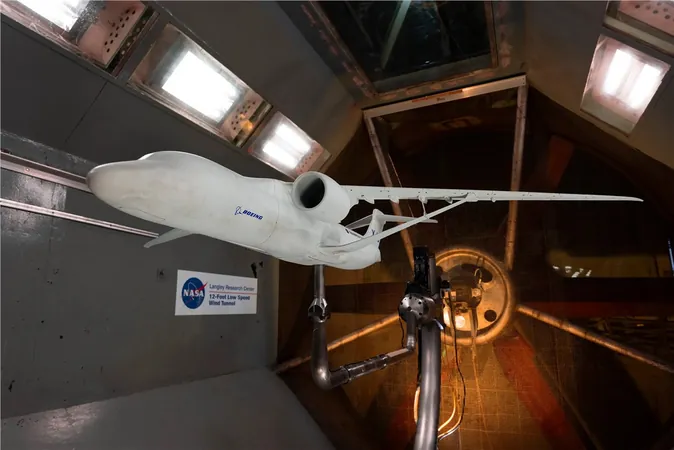
NASA's Groundbreaking Sustainable Aircraft Model Achieves Major Milestone
2024-11-26
Author: Arjun
Introduction
In a significant step forward for sustainable aviation, NASA's Sustainable Flight Demonstrator (SFD) project has successfully completed a crucial phase of wind tunnel testing using a scale model of its innovative X-66 aircraft. This testing is not just a tick in the box—it's a bold leap toward greener skies.
The X-66 Aircraft
The X-66 is an experimental aircraft designed with a revolutionary wing structure called the transonic truss-braced wing. This cutting-edge design features elongated wings supported by diagonal struts, aiming to enhance fuel efficiency significantly. The potential impact? Lower operational costs for airlines and a much smaller carbon footprint.
Moving Toward Reality
To move from concept to reality, the SFD team will need to conduct extensive tests using various models before they can finally get a full-size version of the X-66 airborne. The recent wind tunnel tests specifically aimed to validate the aerodynamics of this futuristic design.
Testing Procedures
Using a model with a wingspan of nearly six feet, engineers ran tests in NASA’s 12-Foot Low-Speed Wind Tunnel at the Langley Research Center in Hampton, Virginia. They meticulously measured key aerodynamic forces, including lift and drag, under a range of flight conditions.
Data Analysis
The data gathered from these tests is invaluable. Team members are currently analyzing it to pinpoint potential design adjustments that could enhance performance in subsequent tests. These findings will pave the way for high-speed wind tunnel evaluations in the next development phase—crucial for the X-66's evolution.
Broader Mission
The SFD project is part of a broader mission by NASA to revolutionize air travel. As commercial aviation faces increasing pressure to reduce environmental impact, the project seeks to influence the design of the next generation of single-aisle airliners—the workhorses of airline fleets across the globe.
Collaboration for Success
Moreover, NASA's partnership with aerospace giant Boeing emphasizes the importance of collaboration in realizing these ambitious goals. With air traffic expected to double over the next few decades, innovations like the X-66 not only promise to improve the efficiency of air travel but also aim to push the boundaries of sustainability in the aviation industry.
Conclusion
Stay tuned—this is just the beginning. The skies may soon look very different as we soar into a future where eco-friendly air travel is the norm!






 Brasil (PT)
Brasil (PT)
 Canada (EN)
Canada (EN)
 Chile (ES)
Chile (ES)
 España (ES)
España (ES)
 France (FR)
France (FR)
 Hong Kong (EN)
Hong Kong (EN)
 Italia (IT)
Italia (IT)
 日本 (JA)
日本 (JA)
 Magyarország (HU)
Magyarország (HU)
 Norge (NO)
Norge (NO)
 Polska (PL)
Polska (PL)
 Schweiz (DE)
Schweiz (DE)
 Singapore (EN)
Singapore (EN)
 Sverige (SV)
Sverige (SV)
 Suomi (FI)
Suomi (FI)
 Türkiye (TR)
Türkiye (TR)